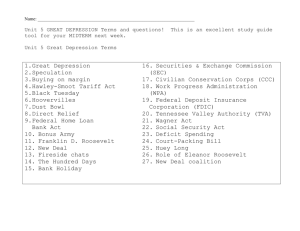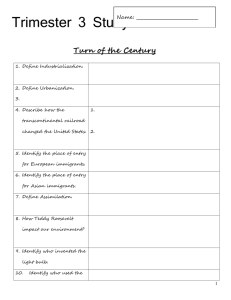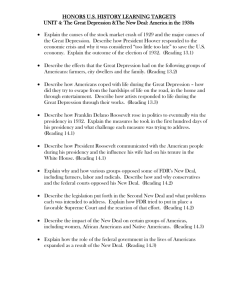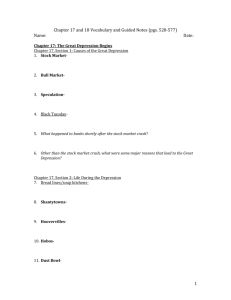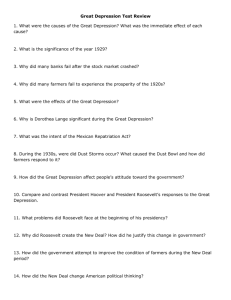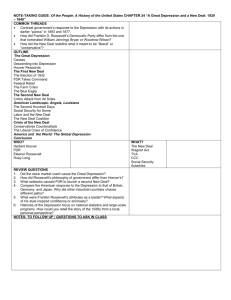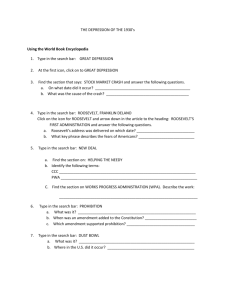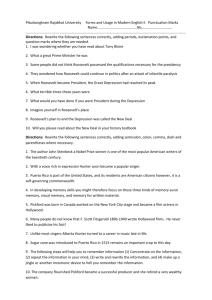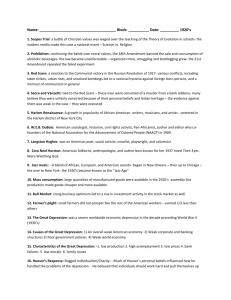siteintro
advertisement
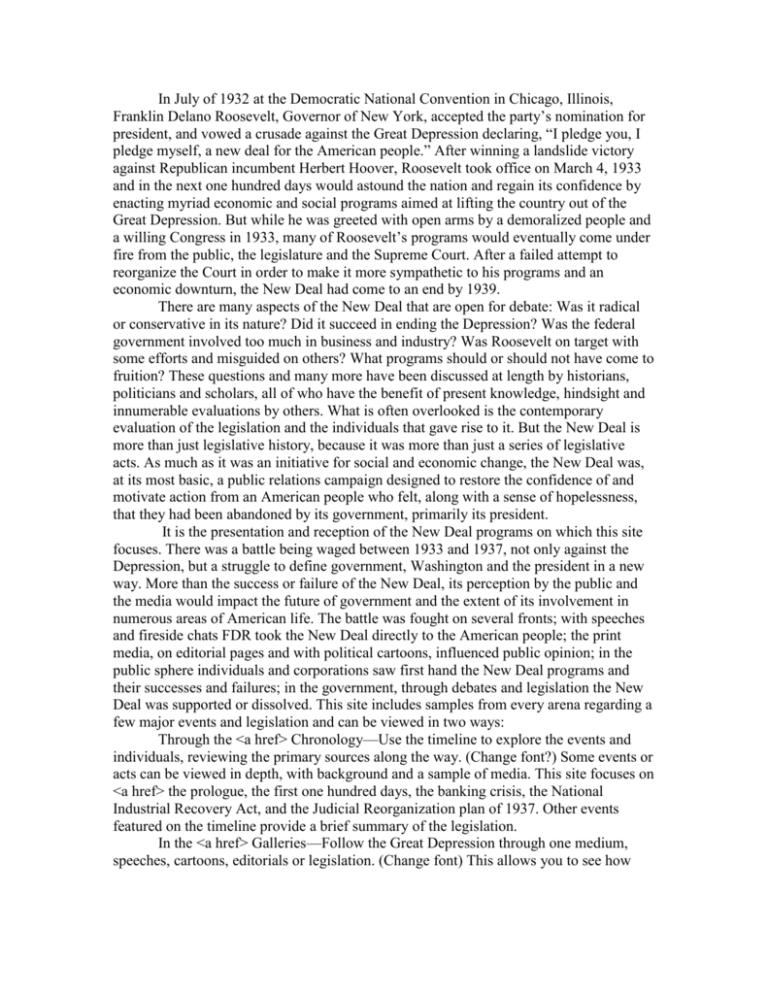
In July of 1932 at the Democratic National Convention in Chicago, Illinois, Franklin Delano Roosevelt, Governor of New York, accepted the party’s nomination for president, and vowed a crusade against the Great Depression declaring, “I pledge you, I pledge myself, a new deal for the American people.” After winning a landslide victory against Republican incumbent Herbert Hoover, Roosevelt took office on March 4, 1933 and in the next one hundred days would astound the nation and regain its confidence by enacting myriad economic and social programs aimed at lifting the country out of the Great Depression. But while he was greeted with open arms by a demoralized people and a willing Congress in 1933, many of Roosevelt’s programs would eventually come under fire from the public, the legislature and the Supreme Court. After a failed attempt to reorganize the Court in order to make it more sympathetic to his programs and an economic downturn, the New Deal had come to an end by 1939. There are many aspects of the New Deal that are open for debate: Was it radical or conservative in its nature? Did it succeed in ending the Depression? Was the federal government involved too much in business and industry? Was Roosevelt on target with some efforts and misguided on others? What programs should or should not have come to fruition? These questions and many more have been discussed at length by historians, politicians and scholars, all of who have the benefit of present knowledge, hindsight and innumerable evaluations by others. What is often overlooked is the contemporary evaluation of the legislation and the individuals that gave rise to it. But the New Deal is more than just legislative history, because it was more than just a series of legislative acts. As much as it was an initiative for social and economic change, the New Deal was, at its most basic, a public relations campaign designed to restore the confidence of and motivate action from an American people who felt, along with a sense of hopelessness, that they had been abandoned by its government, primarily its president. It is the presentation and reception of the New Deal programs on which this site focuses. There was a battle being waged between 1933 and 1937, not only against the Depression, but a struggle to define government, Washington and the president in a new way. More than the success or failure of the New Deal, its perception by the public and the media would impact the future of government and the extent of its involvement in numerous areas of American life. The battle was fought on several fronts; with speeches and fireside chats FDR took the New Deal directly to the American people; the print media, on editorial pages and with political cartoons, influenced public opinion; in the public sphere individuals and corporations saw first hand the New Deal programs and their successes and failures; in the government, through debates and legislation the New Deal was supported or dissolved. This site includes samples from every arena regarding a few major events and legislation and can be viewed in two ways: Through the <a href> Chronology—Use the timeline to explore the events and individuals, reviewing the primary sources along the way. (Change font?) Some events or acts can be viewed in depth, with background and a sample of media. This site focuses on <a href> the prologue, the first one hundred days, the banking crisis, the National Industrial Recovery Act, and the Judicial Reorganization plan of 1937. Other events featured on the timeline provide a brief summary of the legislation. In the <a href> Galleries—Follow the Great Depression through one medium, speeches, cartoons, editorials or legislation. (Change font) This allows you to see how public opinion changed over time and how the New Deal, as a whole, was approached by different media. The site also includes some background on the New Dealers, individuals who made the plan a reality and access to the legislation itself. As one of the first presidents to interact freely with the media and use radio as a means to persuade and calm the public, FDR provided a abundance of material to be reviewed. Unfortunately, the scope of this project is limited, but it should provide a glimpse into the people and events of the Great Depression as well as valuable primary materials that allow the audience to form its own opinion, based on the unadulterated facts. Again, it is not the goal of this site to evaluate the New Deal or its sponsors, but, using examples from the Roosevelt administration, to engage in an active discussion regarding two of the most important political questions of the twentieth century: How do we define the role of government? and Who defines it?


